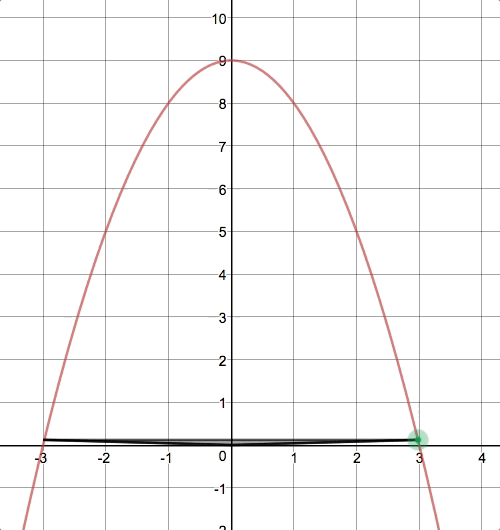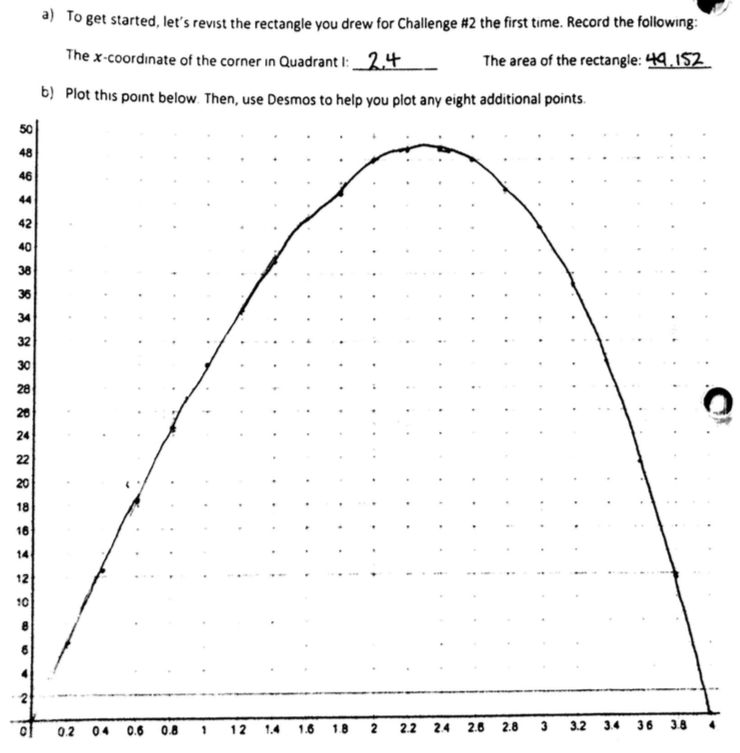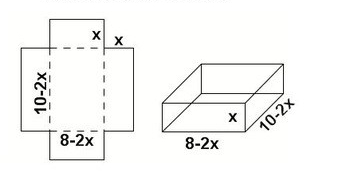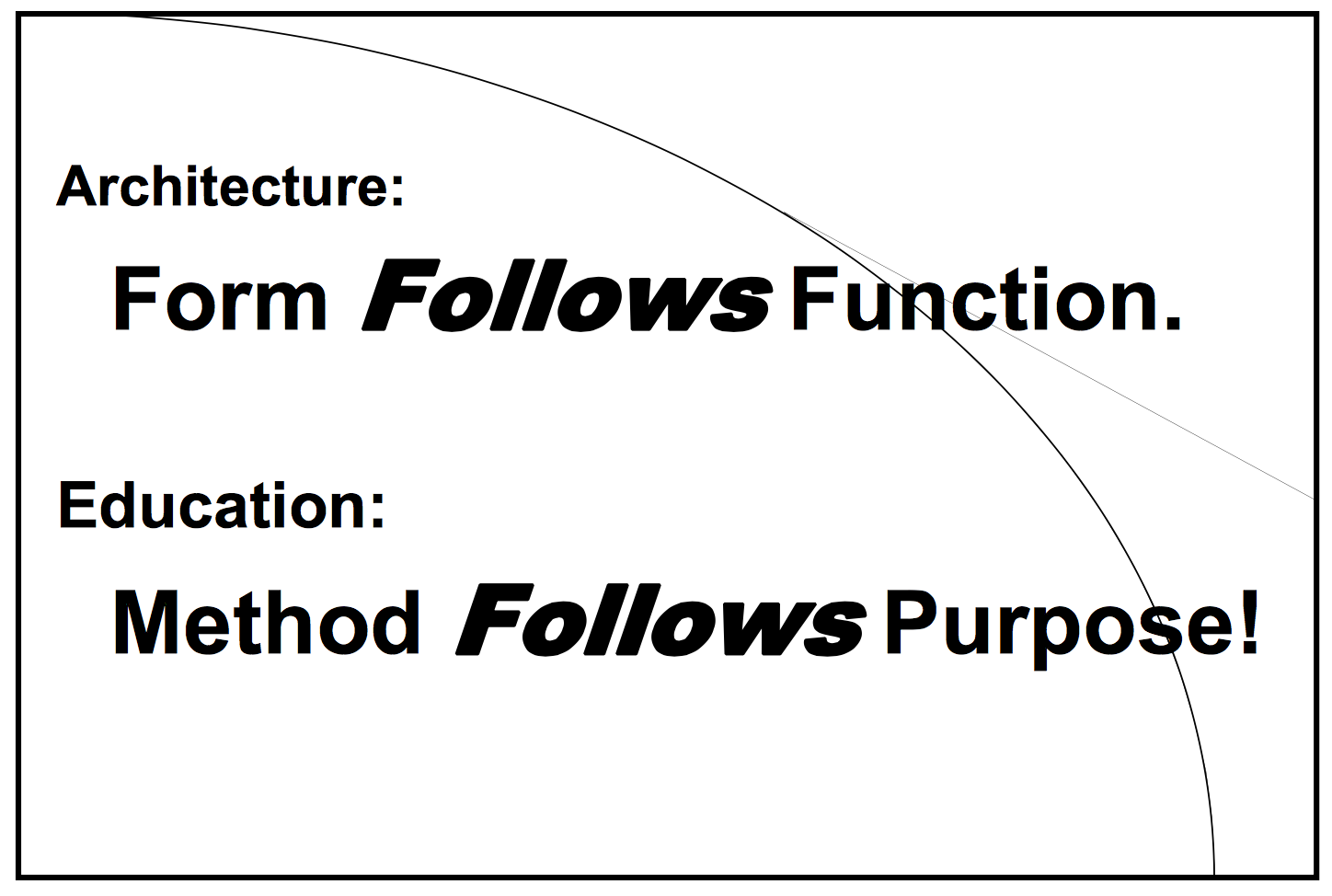I’ve had the pleasure of teaching standard-level calculus with Sam Shah this school year, and recently we’ve been working with the students on optimization. Rather than starting with the canonical calculus optimization problems, we decided to jump in with maximizing the area of various shapes under curves:

I think I first saw a problem like this in a textbook called Advanced Mathematics by Richard G. Brown (page 167, #12):

I’ve always been fascinated by these types of problems because they’re easy to understand and make guesses about but often have unexpected solutions. I wanted to use Desmos to bring this problem to life, so I put together a Desmos activity and companion sheet (.docx version) to look at four of these problems.
Students worked in groups, and they while they all had their own screen, they were expected to move together and come to consensus on the best possible shape before moving on. This fostered lively debate among students as they tried different shapes and improved their guesses by manually calculating areas.
For the “isosceles triangle under a parabola” problem shown above, there were a variety of responses, but there was convergence around the optimal triangle (whose vertex in Quadrant I is :

Students were also asked to identify the constraints of their shapes before moving on to the next challenge. After locking in their guesses for each challenge, students had to really dig in to the second challenge (the “rectangle under a parabola” problem). This time, we provided a slider that would calculate the area of the rectangle for them as they changed the
-coordinate of the vertex in Quadrant I:

Student were expected to record these data points on the companion sheet to form a sketch of the area function:

Many students initially assumed that this area function was going to form a parabola, but after plotting more points, the class decided that it couldn’t be because of the lack of symmetry. But this function has a peak—how could they find it? This is where the calculus kicked in!
After carefully taking the derivative of the area function, setting it to 0, solving, and determining the dimensions of the best possible rectangle, students were able to finally determine which group came the closest with their initial attempt. They were also ready to tackle the remaining challenges on the second part of the companion sheet (.docx).
Before jumping in, I was also able to recognize groups for getting the closest to the best possible shape while also pointing out that they could do even better!

All in all, I thought this was a super fun way to kick off the optimization unit while keeping engagement high and providing valuable practice with the non-calculus algebra that can trip students up. Most importantly, calculus was positioned as the aspirin for the headache posted by the Desmos activity.
I would love to see these types of optimization problems become more popular!
Resources:
- Optimization Exploration (Desmos activity)
- Companion Sheet (Part I) (.pdf)
- Companion Sheet (Part I) (.docx)
- Companion Sheet (Part II) (.pdf)
- Companion Sheet (Part II) (.docx)
P.S. See Sam’s post on a lovely lesson he put together called POP! Popcorn Optimization Problem, which is a way more engaging way for students to tackle traditional optimization problems that usually look like this:

